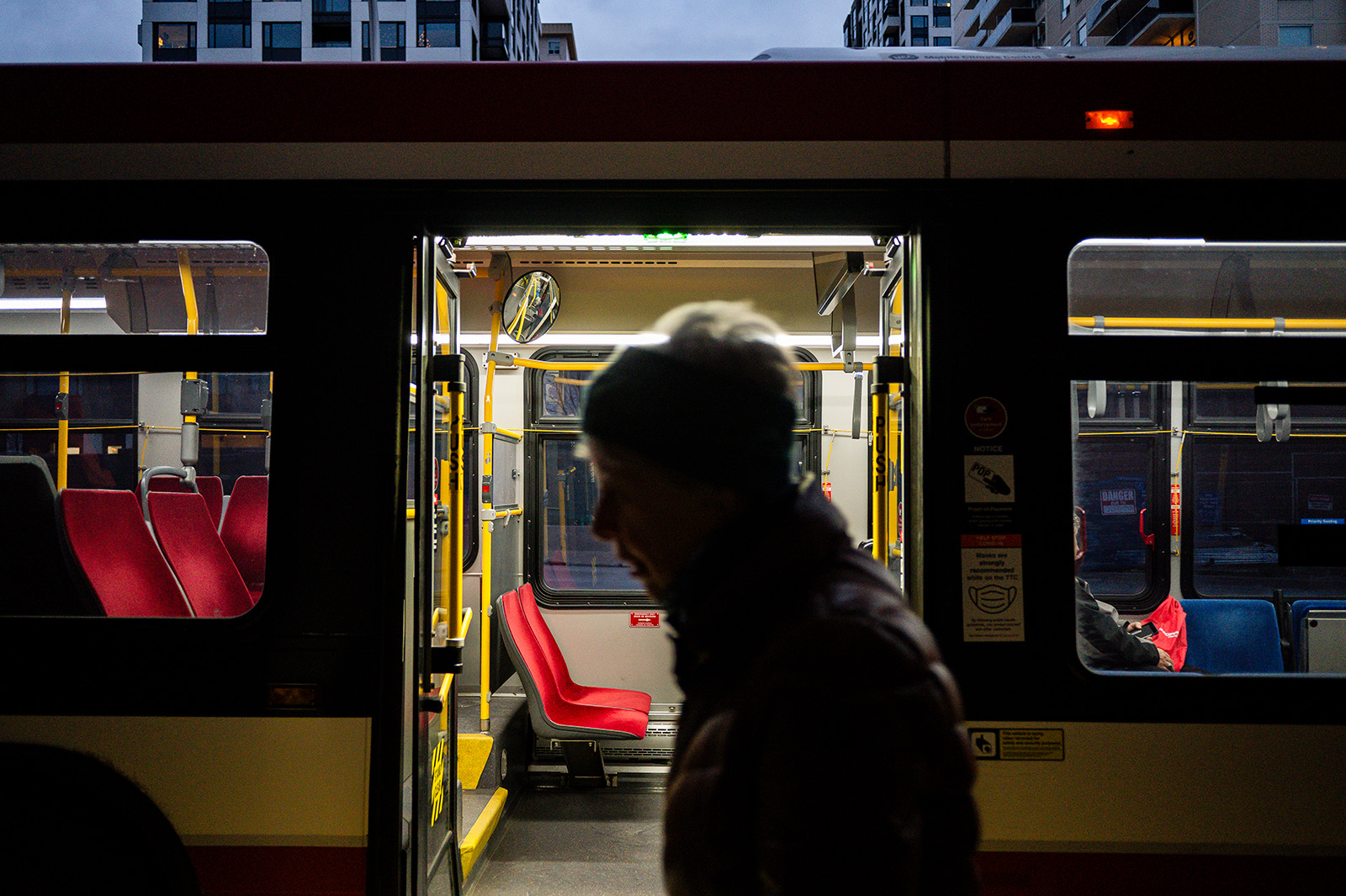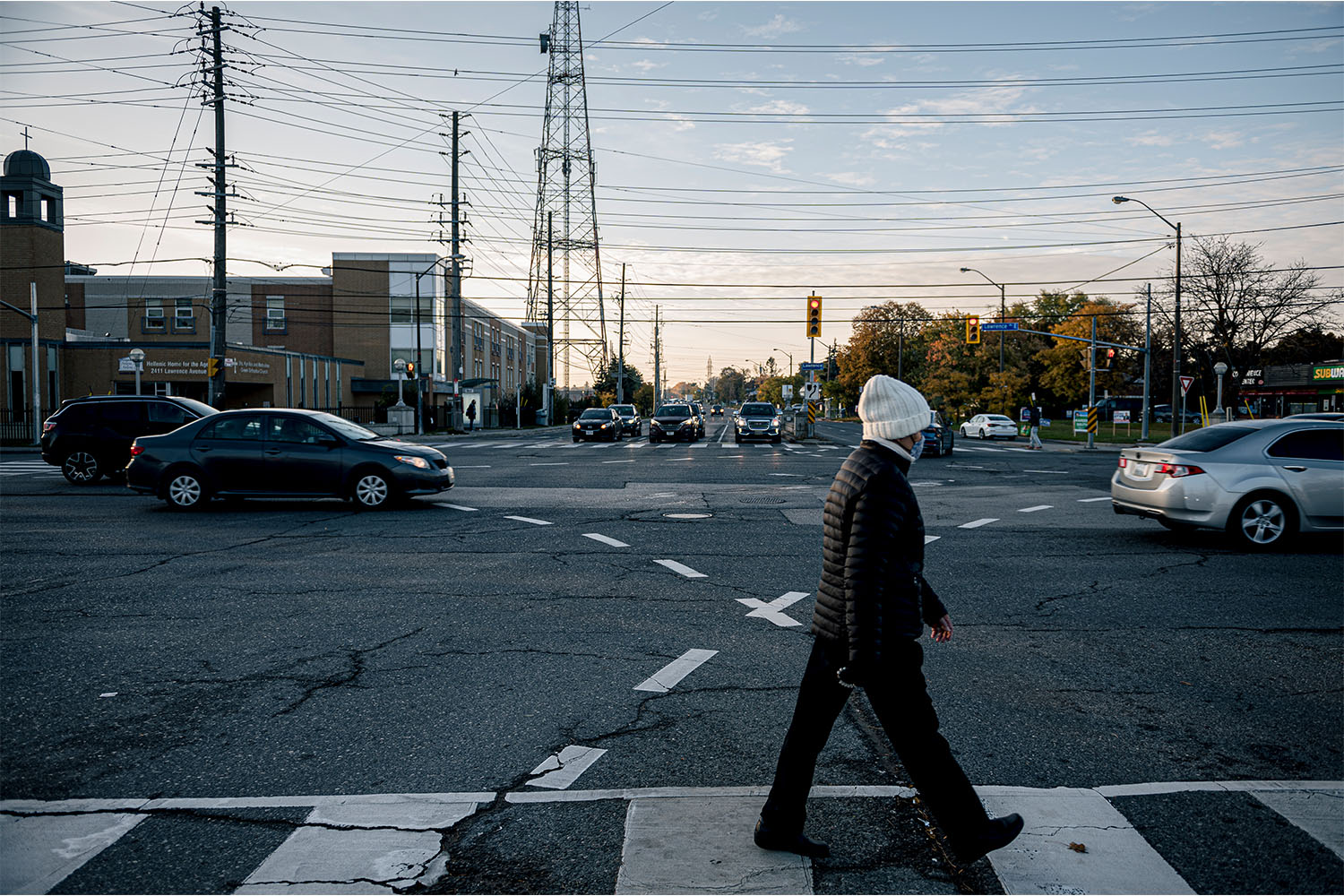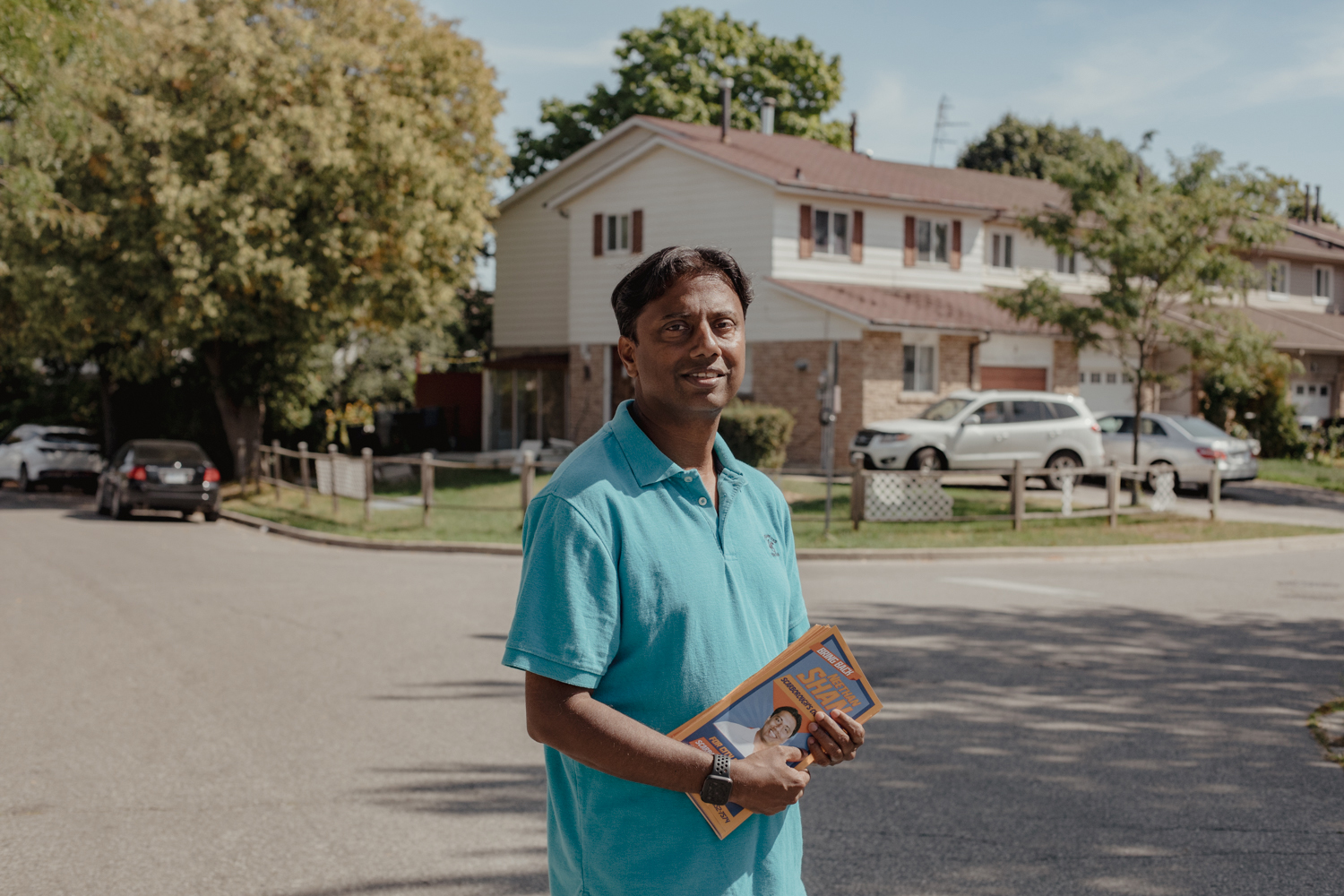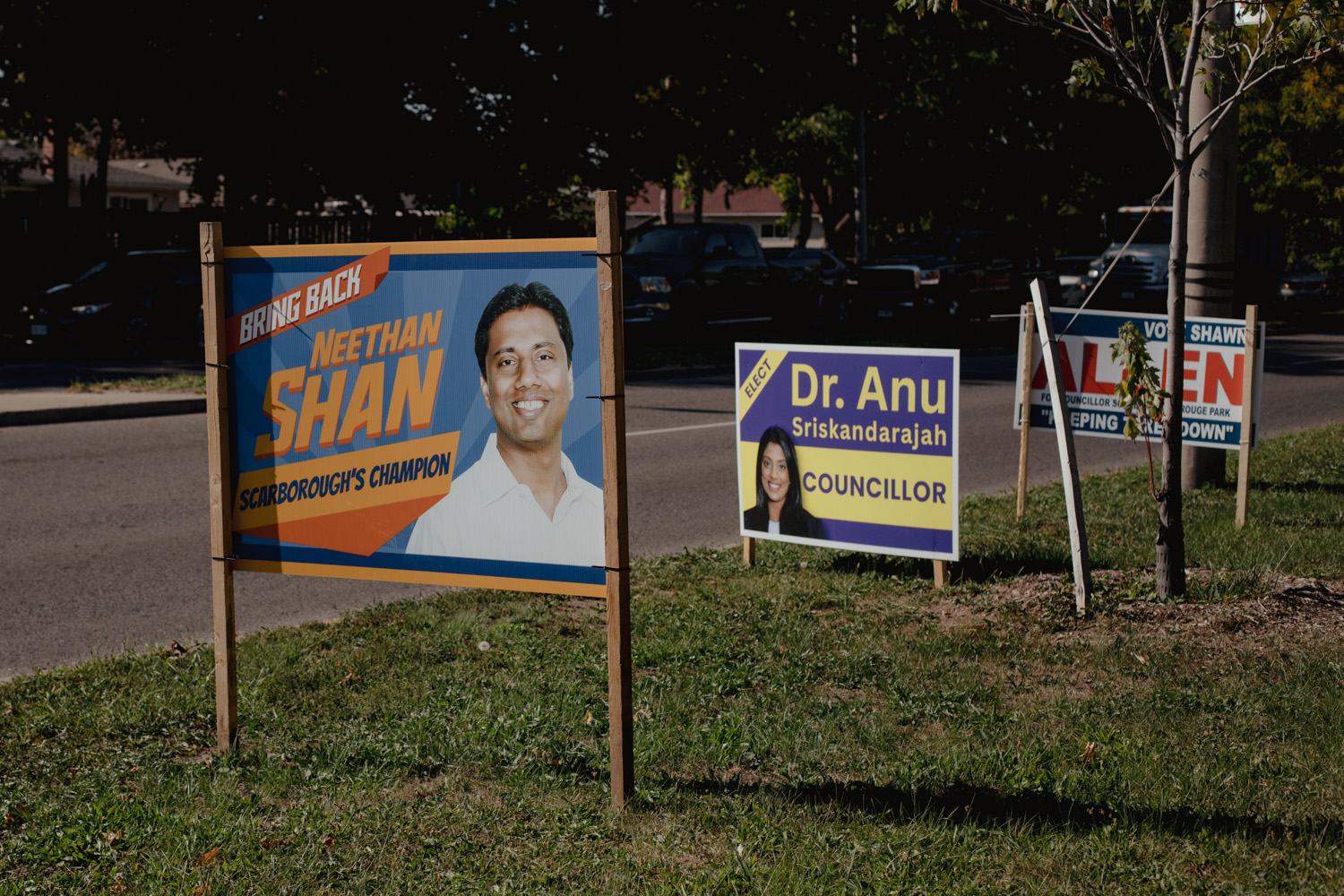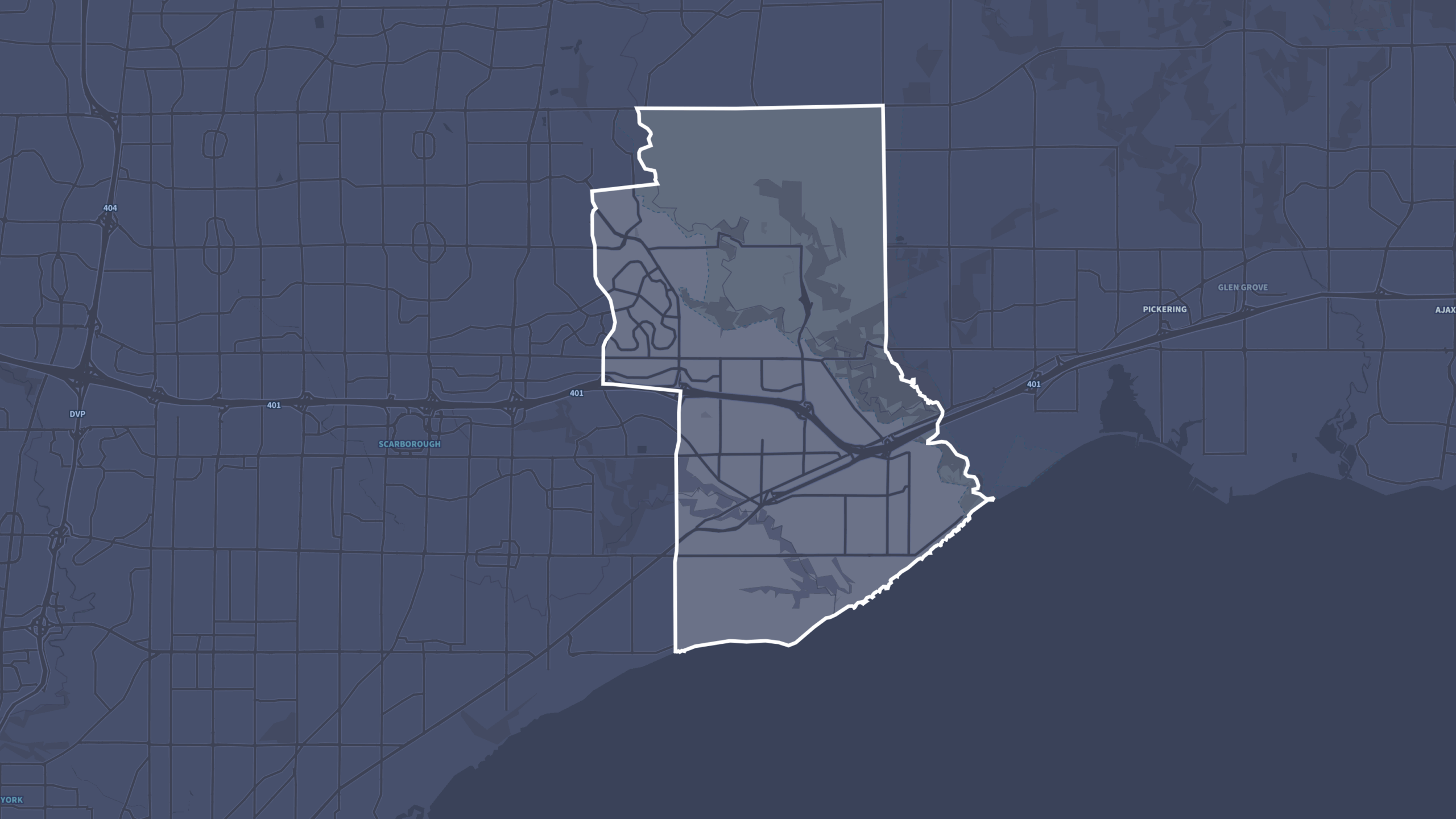

This story has been updated to reflect new statements from the city.
After hearing from stakeholders and members of the public across the city in January, Mayor John Tory proposed his first “strong mayor” budget to city hall today.
In a press conference, Tory said that the budget comes as the city “faces a series of unprecedented challenges as we work to recover from the COVID-19 pandemic.” Those challenges underscore the need for new revenue streams for the city, which Tory said he would explore in the coming months. “Toronto needs a new fiscal framework,” he said.
On February 14, city council has scheduled a special meeting to consider the budget, but any changes from councillors will only come at the margins. Council can vote on amendments, but “strong mayor” powers mean that Tory can veto those amendments, and council needs a two-thirds majority to override any of those vetos. In his remarks today, Tory announced that city staff had found $6 million in additional savings, and said he was open to hearing from councillors about the best way to use that money—approximately 0.04 percent of the overall operating budget.
The budget, Tory stressed, is designed to “protect frontline services.” But despite this being Tory’s ninth budget, his plans don’t boldly address any of the city’s long-standing problems. Last year, The Local reported on the municipal decision-making and financial choices that have led to crises in policing, transit, climate conditions, and road safety. Ahead of this month’s council decisions, we’ve compiled some of the mayor’s most important budget proposals, and gone back to the experts to talk about what might be on the horizon.
Growth in police funding despite protests
Budget change: $48.3 million increase, or 4.3 percent, for a total of $1.16 billion
Policing is already one of the city’s single-biggest line items, and this year, the Toronto police board has voted to increase its budget—which is already more than $1.1 billion—by $48.3 million. Despite protests against the increase since it was first proposed, Tory is adamant that more money is needed. “I listened, we had a process, but I stood firm on what I recommended,” said Tory.
The Mayor cites lengthy wait times as one of the primary reasons for the increase, which he says will be used to hire 200 officers. The Local reported on police wait times last year: an auditor general’s report from June 2022 revealed that Toronto police take an average of 15-20 minutes to answer the most urgent emergency calls, and around 40-50 minutes for the second-most urgent category of calls. The target response time for both is six minutes.
But the answer to an overburdened emergency response system isn’t just hiring more police. As we reported last year, there’s no proven relationship between increased spending on police and a decrease in wait times—not in Toronto’s history, nor when compared to other major Canadian cities. At the same time, an increased police presence doesn’t guarantee a reduction in crime.
And while many of the calls made to the police are about people experiencing mental health concerns and houselessness, the proposed 2023 budget cuts $4.3 million from employment and social services, and nearly $2.5 million from the already crumbling Toronto Community Housing Corporation. These budget proposals, advocates say, only serve to militarize the city, rather than address the root causes of violence or crime.
Last summer, the police released data showing that, as police accountability activists have long said, Black Torontonians are disproportionately subjected to use of force, strip searches, and having guns pointed at them by the police. Despite an apology from the interim police chief at the time, there was no mention of these revelations when the new budget was proposed or approved.
“This city is at war with its people,” says Professor Beverly Bain, co-founder of the No Pride in Policing Coalition. “Police don’t keep us safe, they never have. Not people who are marginalized, Black people, brown people, Indigenous people, the homeless. In fact, quite the opposite.”
Much of the funding going towards the police could instead be channelled to social services and non-police crisis response services, advocates have said. The Toronto Community Crisis Services pilot projects, operating in partnership with mental health and community-specific support services in the city, dispatch crisis workers to respond to calls made directly to them or routed through 911—their funding is slated to increase by $2.7 million in 2023, or 25 percent.
Kamaamwizme wii Naagidiwendiiying, the downtown west pilot serving Indigenous crisis callers, has already expanded its staffing and geographic boundaries. But genuinely effective intervention requires social services like shelter, mental and physical health care, and employment support. “If we have no options to provide an individual in crisis, we’re not actually alleviating this person from crisis,” says Saige McMahon, director of the downtown west project. “We need to make sure that there’s resources in place for that to happen.”
New transit lines eat up funding, while service is cut elsewhere
Budget change: An increase of $53 million in city funding, with additional funds incoming through COVID supports and fare revenue, for a net total of $1.3 billion
At first glance, it may look like the TTC’s operating budget is going up by a fair amount. But of the $53 million increase, $42.6 million is specifically going to Lines 5 and 6—the Eglinton Crosstown and Finch West LRTs, expected to open this year (although internal documents from Metrolinx last year said there was a “lack of a credible plan” to finish the Eglinton Crosstown). That leaves only $10.4 million of the city’s new funding to support existing operations, a 1.2 percent increase.
In order for these numbers to work, the city needs two significant things to happen. First, there is a gaping hole left by declined ridership revenues that needs to be filled. The city is requesting $366.3 million in COVID supports from the provincial and federal governments, which are yet to be confirmed for this year, Tory noted: “Why we should be standing here in February of this year and not have confirmation of that support as yet is a mystery to me.”
The second thing is a reduction in services to bring down operating costs while simultaneously increasing fares. The city is planning a five percent cut to subway, streetcar, and bus service (or a nine percent cut compared to pre-pandemic frequency), which they say will meet current levels of demand, and a ten-cent fare increase is slated to bring in an additional $16.1 million. The Local reported last year that bus riders, especially those in the inner suburbs, face unrelenting delays. This year, for a higher price, passengers get to wait longer to catch a more crowded ride, no matter what kind of transit they take.
“If your bus comes every 10 minutes today, it could come up to every 13 minutes, once these cuts happen,” says Shelagh Pizey-Allen, executive director of transit advocacy organization TTCriders.
The standard applied by the TTC to its capacity and crowding is also changing. A budget briefing document mentions plans to “increase the pre-COVID vehicle crowding standard at off-peak periods.”
“What that means concretely is that there’s going to be less room for strollers, for grocery carts, for wheelchairs, for mobility devices in the off-peak,” says Pizey-Allen. “This is really concerning [because] it is those off-peak times of day that ridership has come back the most quickly.”
This decision feels particularly egregious given this year will see the roll-out of the TTC’s Family of Services model of paratransit, forcing some riders who are elderly or have disabilities and could formerly access door-to-door Wheel-Trans services to take conventional transit, as The Local reported last year. “When the bus does come along, there’s going to be less room for someone using a wheelchair,” Pizey-Allen warns.
The TTC’s plans across the board aren’t doing as much as they could be for their more vulnerable riders, from the elderly and disabled to the lower-income. The TTC’s Fair Pass program, offering reduced fares to low-income applicants, is expanding its eligibility criteria to subsidize up to 50,000 riders’ trips this year, but its target is only 30 percent of that full capacity. Rather than educating the public on the availability of the Fair Pass, the city plans to instead align their funding with that expected low demand, and offset $3.6 million from the Fair Pass program, Pizey-Allen points out.
Safety on transit has been the subject of extensive conversation through January, after a series of seemingly random, violent attacks on the TTC. Eighty police officers have been deployed to patrol the city’s transit network in the aftermath, although advocates have repeatedly pointed out that increased police presence disproportionately harms Black and Indigenous people, fails to prevent violence, and only serves to criminalize unhoused people seeking refuge on transit. Early this week, the TTC also committed to adding 20 community safety ambassadors and 50 security guards with mental health support training, de-escalation training for TTC employees, and greater staffing levels overall. Part of the TTC’s expanded 2023 budget is allocated for improving safety on transit, including through 25 new special constables. But historically, special constables—like the police—have disproportionately targeted Black and Indigenous riders, and could present the same problems as increasing police presence more broadly.
Both transit and environment advocates in the city have urged the city to consider a commercial parking levy as an alternative mode of revenue, rather than a fare hike. Similar initiatives have been applied in Montreal and Vancouver, and according to a revenue tool assessment report the city commissioned in 2016, a commercial parking levy could bring in revenue anywhere between $35 and $500 million, depending on how it’s applied, and additionally incentivize use of transit. At Wednesday’s press conference, Tory said he expected that council would explore the feasibility of the commercial parking tax.
Climate investments leave an unclear path to net zero
Budget: $2 billion in capital investments to reduce emissions or improve climate resilience
It’s a little harder to nail down exactly how the spending on climate has changed from year to year given climate-related projects are scattered across different parts of the city budget, rather than concentrated in a single line item or office. But one thing’s clear: it’s not enough. “The city continues to not address the scale of the action they’ve committed to in their climate plan and the net zero strategy,” says Sarah Buchanan, campaigns director at the Toronto Environmental Alliance (TEA). Last year, Buchanan points out, the city put out a technical report on their climate plan, TransformTO, that included a pathway to net zero by 2040 which requires an investment of $6-8 billion per year from now through 2030 by all levels of government, businesses, and individuals. This year, the city has committed $2 billion, which includes direct and indirect funding for climate initiatives, and its projected spending for the next nine years is only a quarter of the investment laid out in the pathway report. “The climate spending outlined in the 2023 budget reflects only the City of Toronto’s contribution. Continued investments in climate action from all residents, businesses, private sectors, and governments will be required to meet our ambitious climate targets,” the city said in a statement to The Local.
The city hasn’t provided a concrete breakdown of where the rest of the ambitious climate investments will come from, or whether the target is likely to be met city-wide. “It’s fine to collectively share the load,” says Buchanan. “But if we have no idea what that load looks like…Or who needs to be involved in carrying it…that creates a really big accountability problem, not just at the city, but at every level of government.”
“The corporate sector certainly isn’t going to voluntarily all come together, track their own corporate emissions, and make a plan to address it, fund it, and deliver that back to the city,” she adds. “So governments really do need to lead in that administrative way.”
Last year, The Local wrote about the inequities in extreme heat in the city’s buildings, particularly older residential areas housing lower-income, racialized, and older populations who suffer worse health outcomes during extreme heat. To address these conditions and make buildings more energy efficient in time for their 2040 and 2050 climate goals, the city would need to retrofit 29,000 buildings a year, a goal they are nowhere close to meeting. Progress notes from the 2023 budget briefing on climate show that since 2020, the city appears to have retrofitted less than 7,000 buildings per year. The city says demand for loan-based energy retrofitting programs has been low due to the program’s rising interest rates, which are pegged to the city’s own borrowing costs. This means the city hasn’t spent as much as it could on the task, and continues to cut back on its environment and climate capital budget. In a statement to The Local, the city said more buildings could be retrofitted through non-municipal retrofitting programs. “There are a number of other programs that exist to support home and building retrofits…Through TransformTO, we are looking to expand our programs and work more closely with other retrofit programs going forward,” they said.
The capacity and urgency with which the city is approaching its TransformTO goals doesn’t reflect the realities of the climate crisis. “If they were really looking at the climate projections for Toronto in the coming decades, this budget would look very different,” says Buchanan. “It’s really worrying to see this trend of just kicking the can down the road, letting the state of good repair backlog build, relying so heavily on the federal government and provincial government for commitments they haven’t made yet. And it’s just all adding up to you need new revenue.”
Vision Zero ambitions kicked down the road
Budget: $72.3 million, an increase of $8.3 million compared to 2022
Four pedestrians have already been killed and 88 others injured in vehicle collisions in just the first three weeks of January—a rate 76 percent higher than the same period the year prior. Against that backdrop, the budget is setting off alarm bells for road safety advocates across the city. Last year, the city planned that the 2023 road safety capital budget would be $43.8 million—this figure has now been slashed to $23 million, with the planned budgets for the next five years increasing as a result, signalling to road safety advocates that the city is pushing its capital plans down the road. The operations budget has increased to $49.3 million, with more money overall devoted to road safety than in previous years—but new road safety improvements fall under the capital budget, which has only increased by $3 million. The city failed the majority of its targets for last year’s road safety improvements, from safety zones to traffic control signals and accessibility measures. That was with a budget just slightly smaller than this year’s capital budget: how is road safety supposed to make any significant improvements in the city if not enough money is invested in it?
In the first quarter of this year, transportation services are also supposed to come back to city council with a review of the criteria for assessing road safety improvement requests—an opportunity that transportation services told The Local last year might lead to more proactive methods of improving road safety conditions, rather than having to wait for requests from councillors or local residents. It’s difficult to say how this budget would help or hinder such a change.
The four pedestrians killed in collisions this year were in areas known to be “very badly designed, high speed, arterial roads, which are the most deadly type of road in Toronto,” says Jess Spieker, a road safety advocate with Friends and Families for Safe Streets. “Those are the roads that [our leaders] are the most afraid to make design changes to. Also with the restricted capital budget for Vision Zero this year, it’s hard to see any of those changing.”
“We don’t even have the resources to be reactive, let alone particularly proactive.”
Correction: A previous version of this article presented the $8 billion required annually to reach net zero by 2040 as a target set by the city for its own capital investment. In an email response sent by the city after publication, it clarified that these investments would be required across all levels of government, as well as individuals and businesses. The story has been updated to reflect this statement and a subsequent advocate response.
The city also clarified a change to their 2022 Vision Zero red light camera target—The Local’s data has been updated to reflect the new information.

